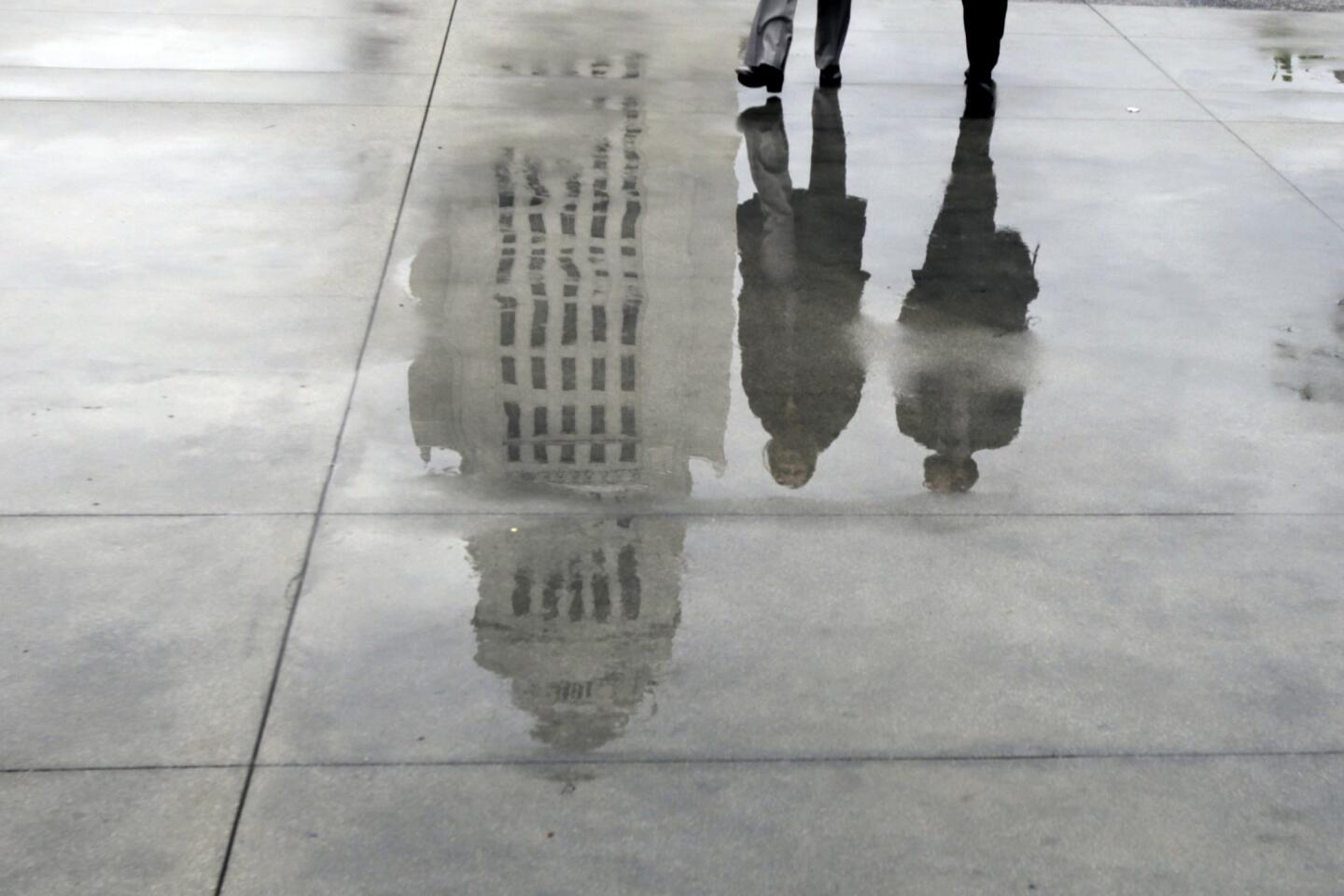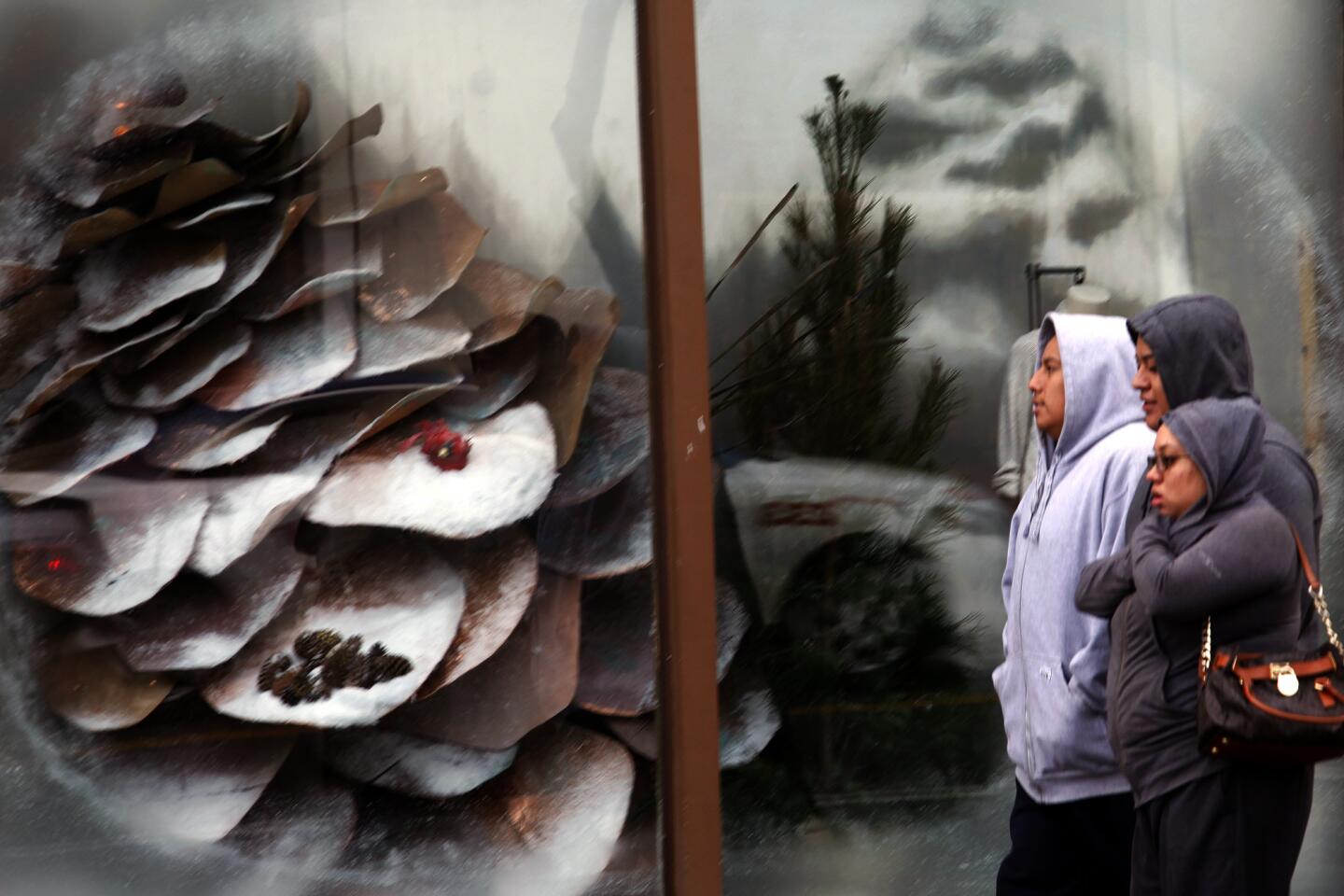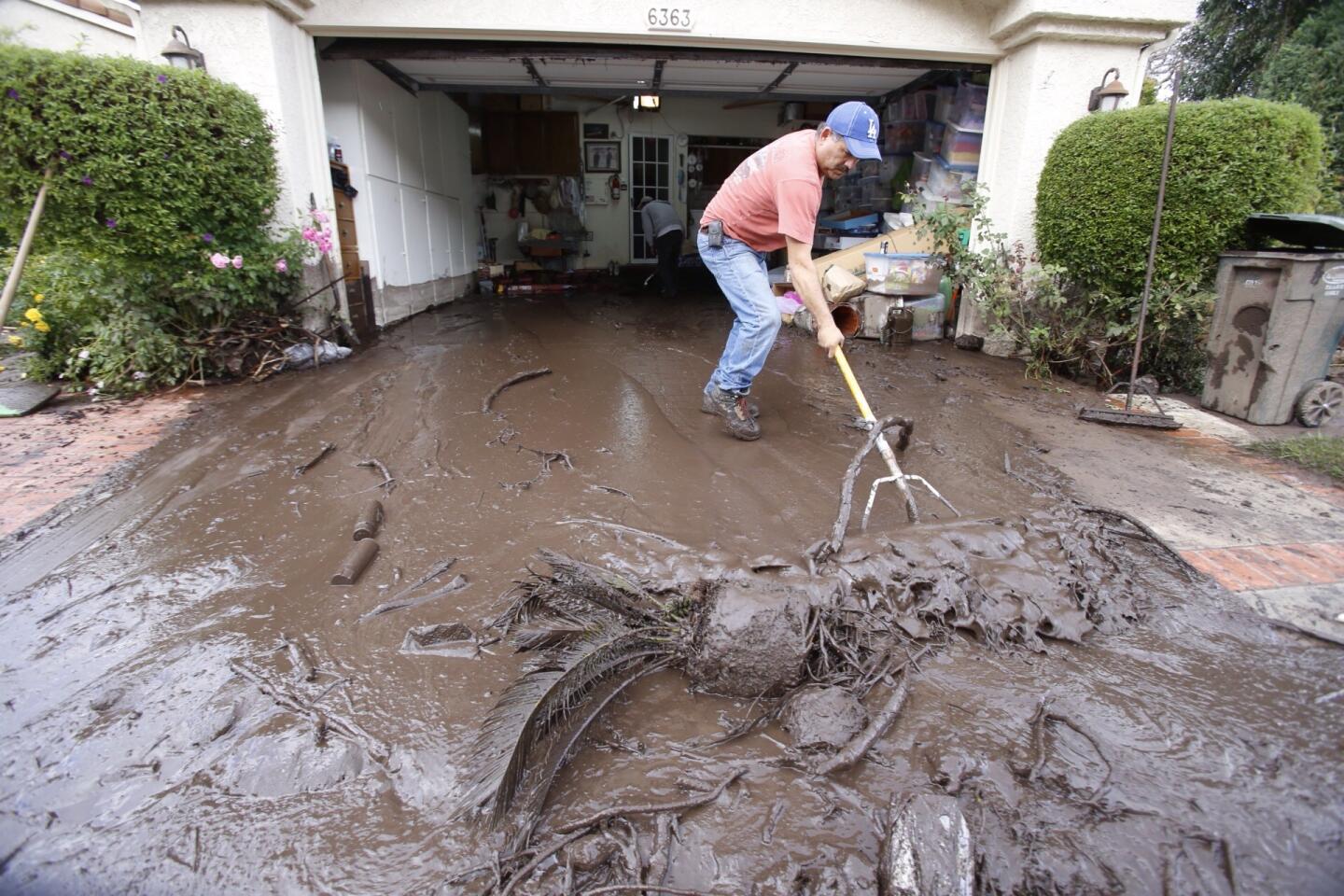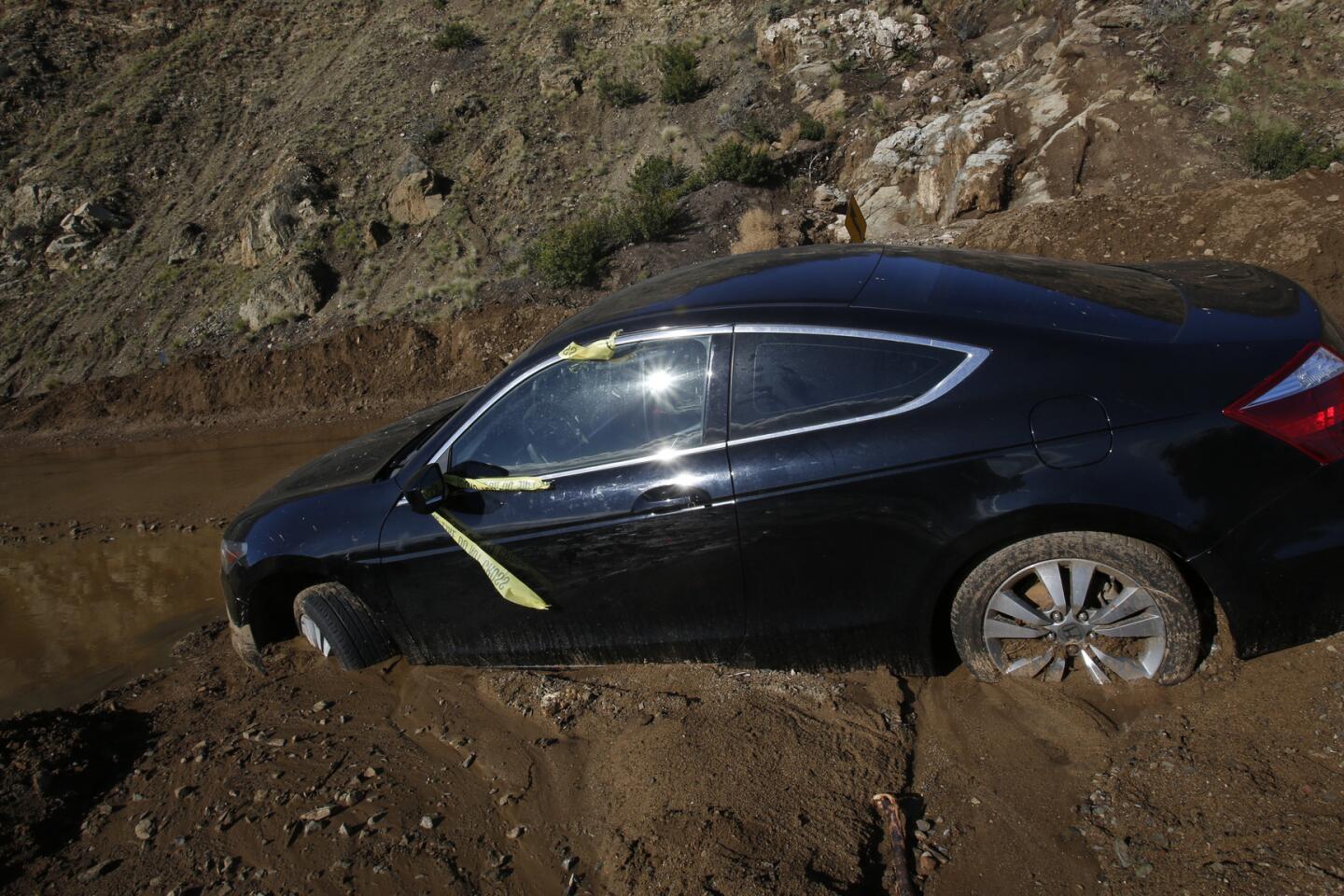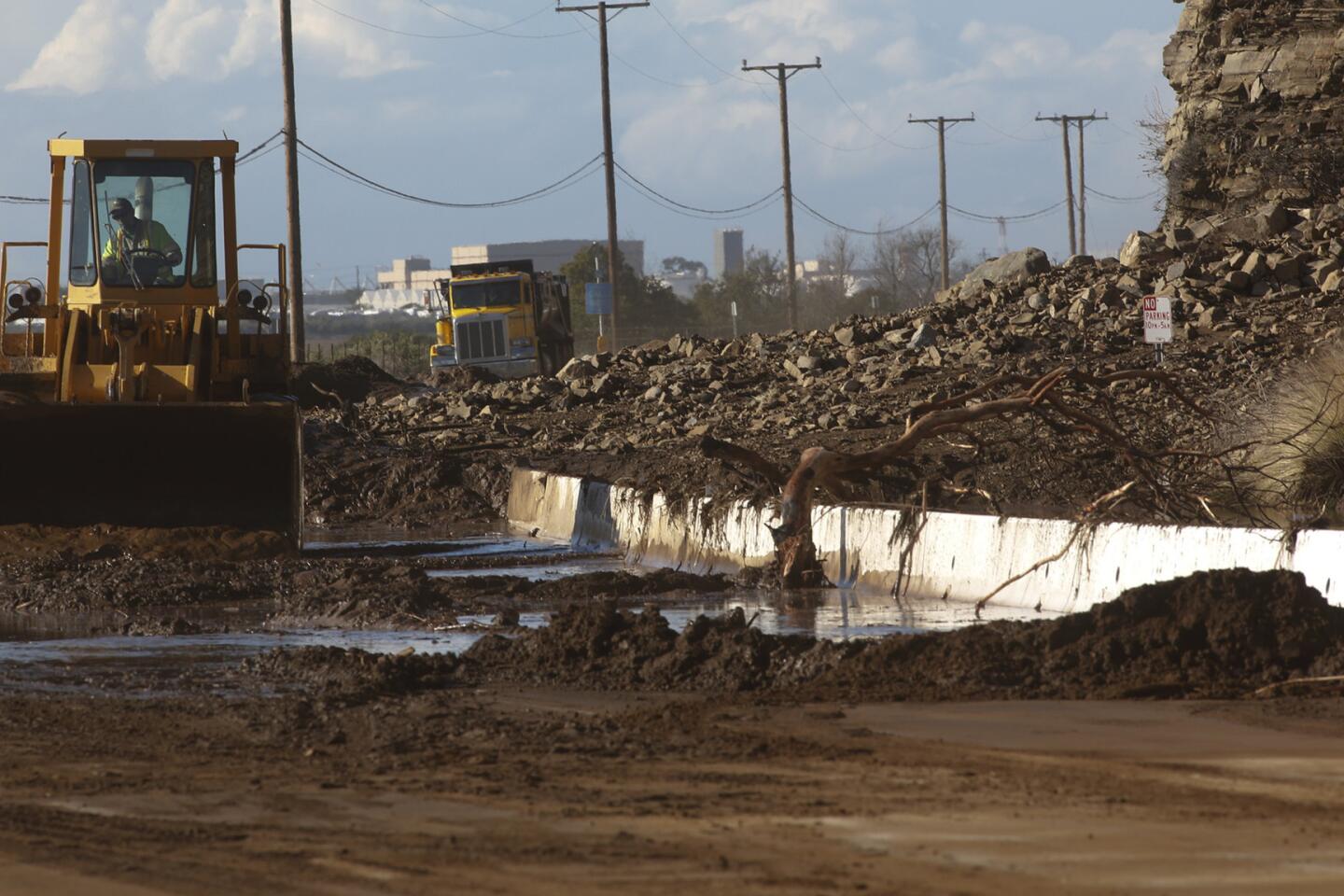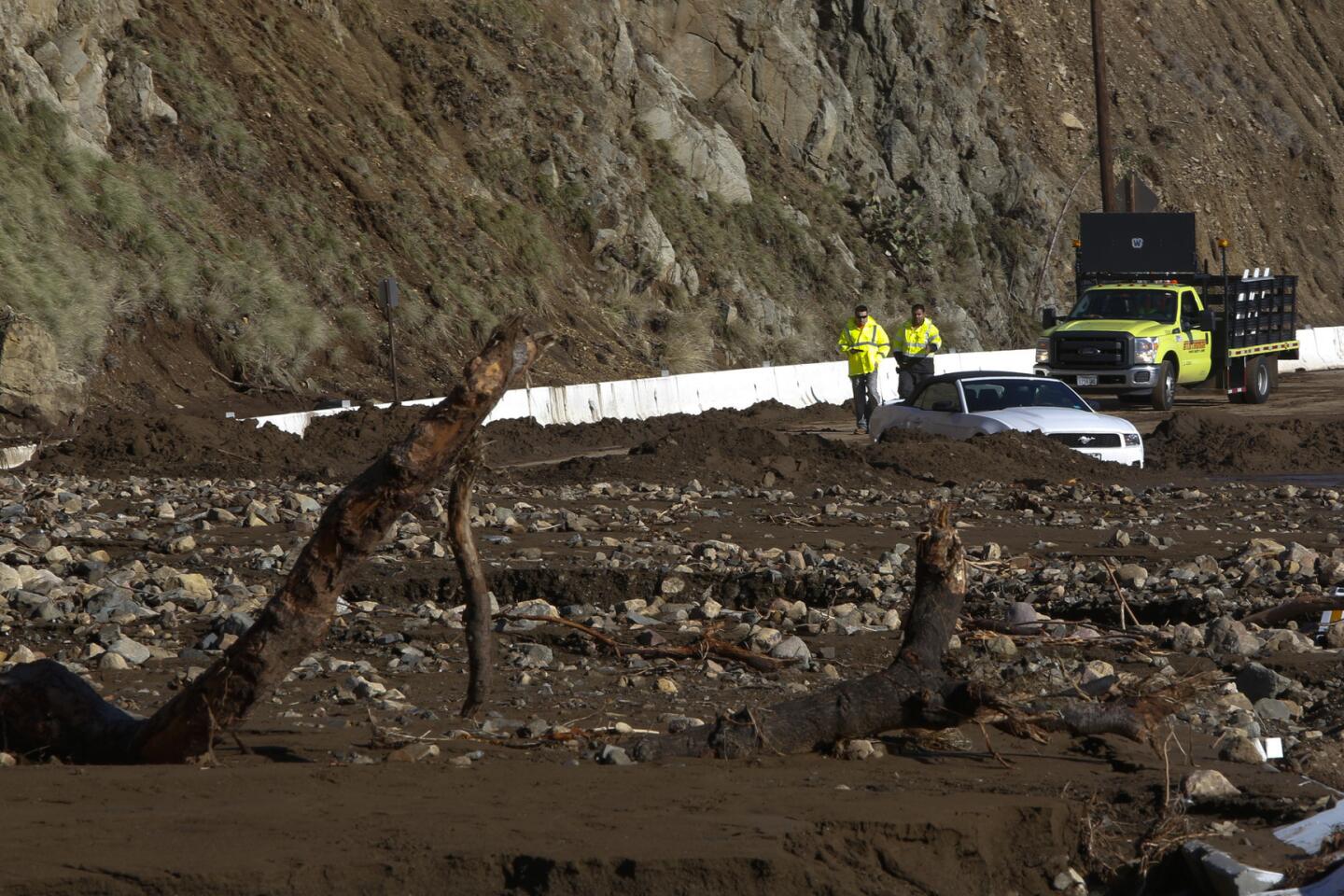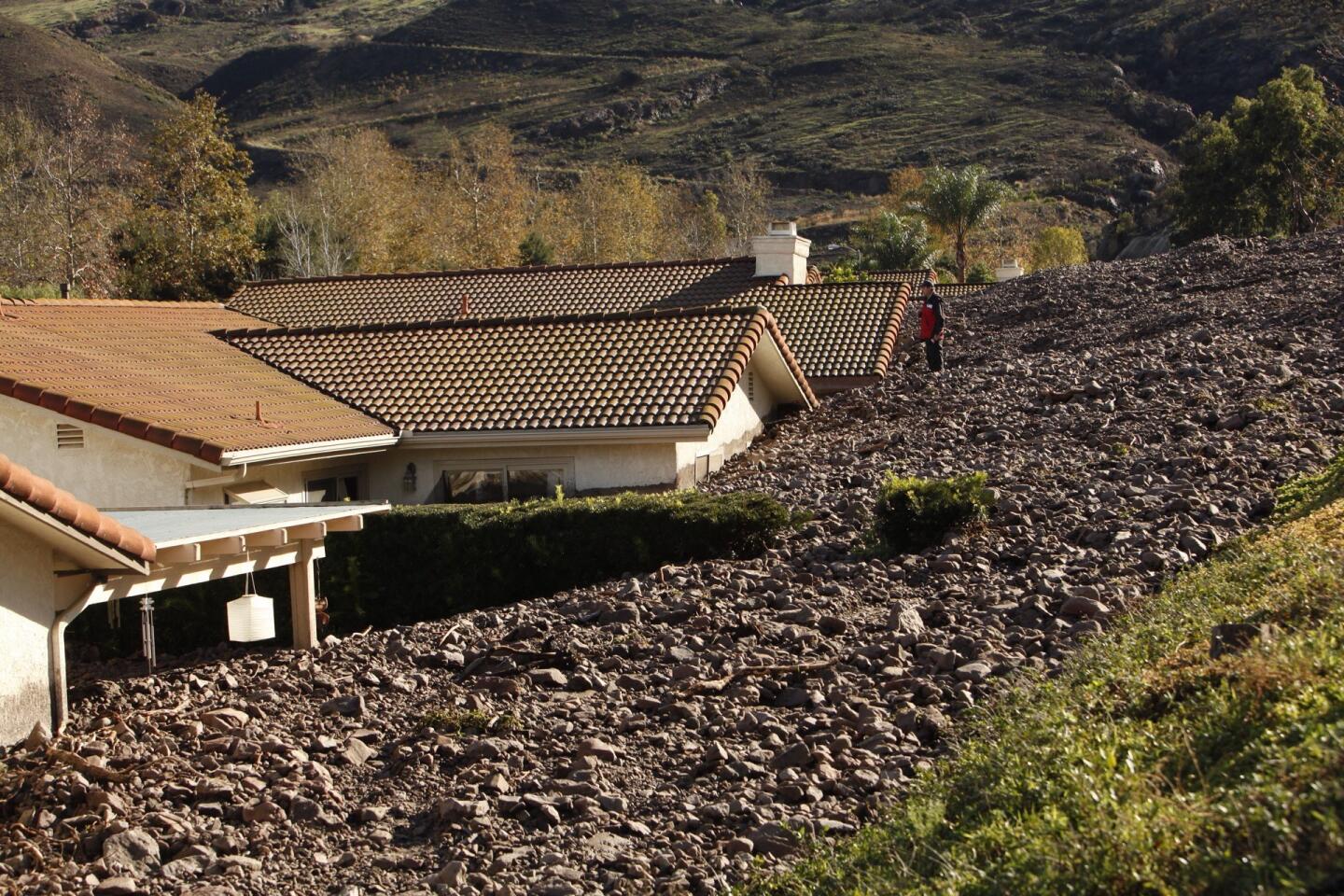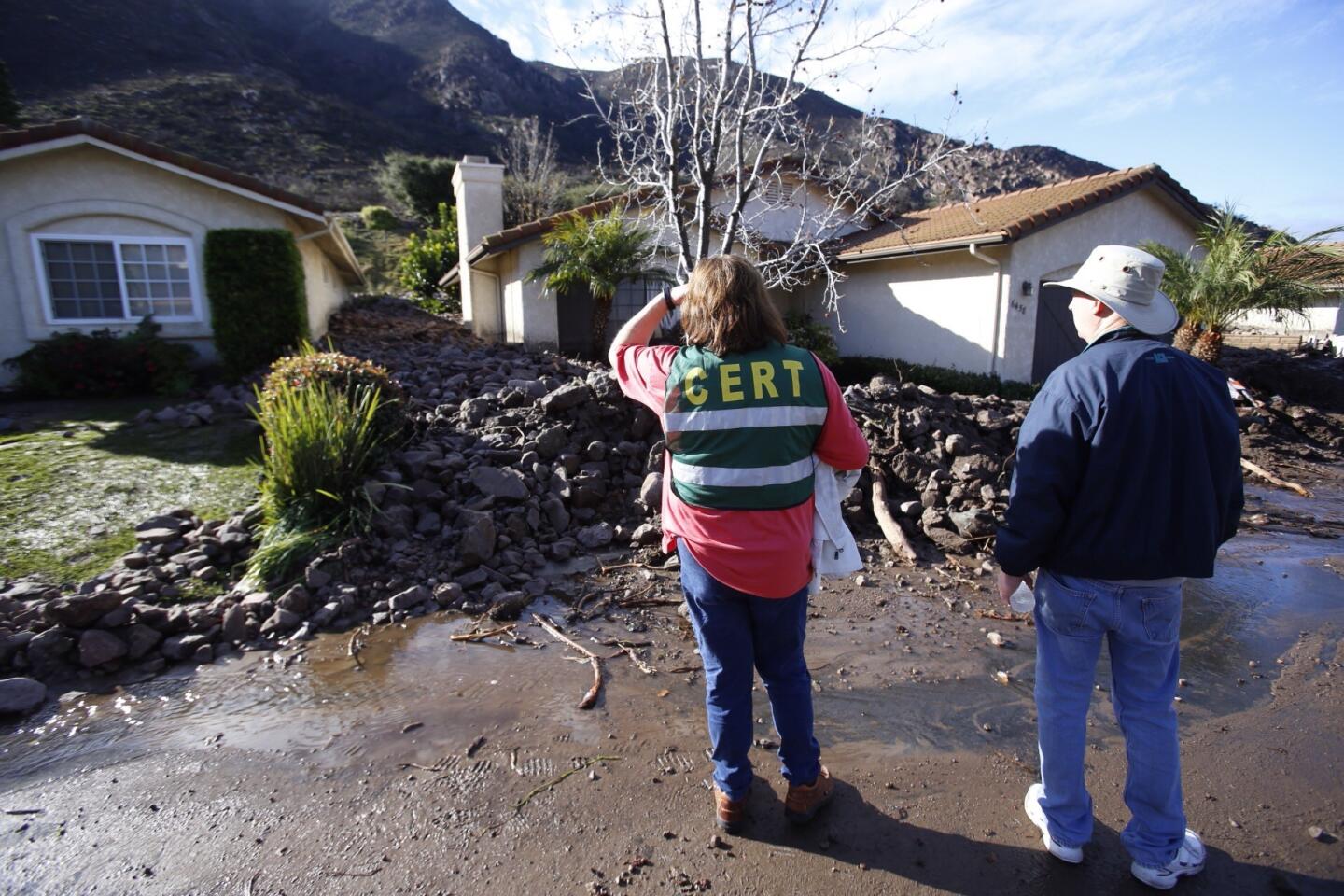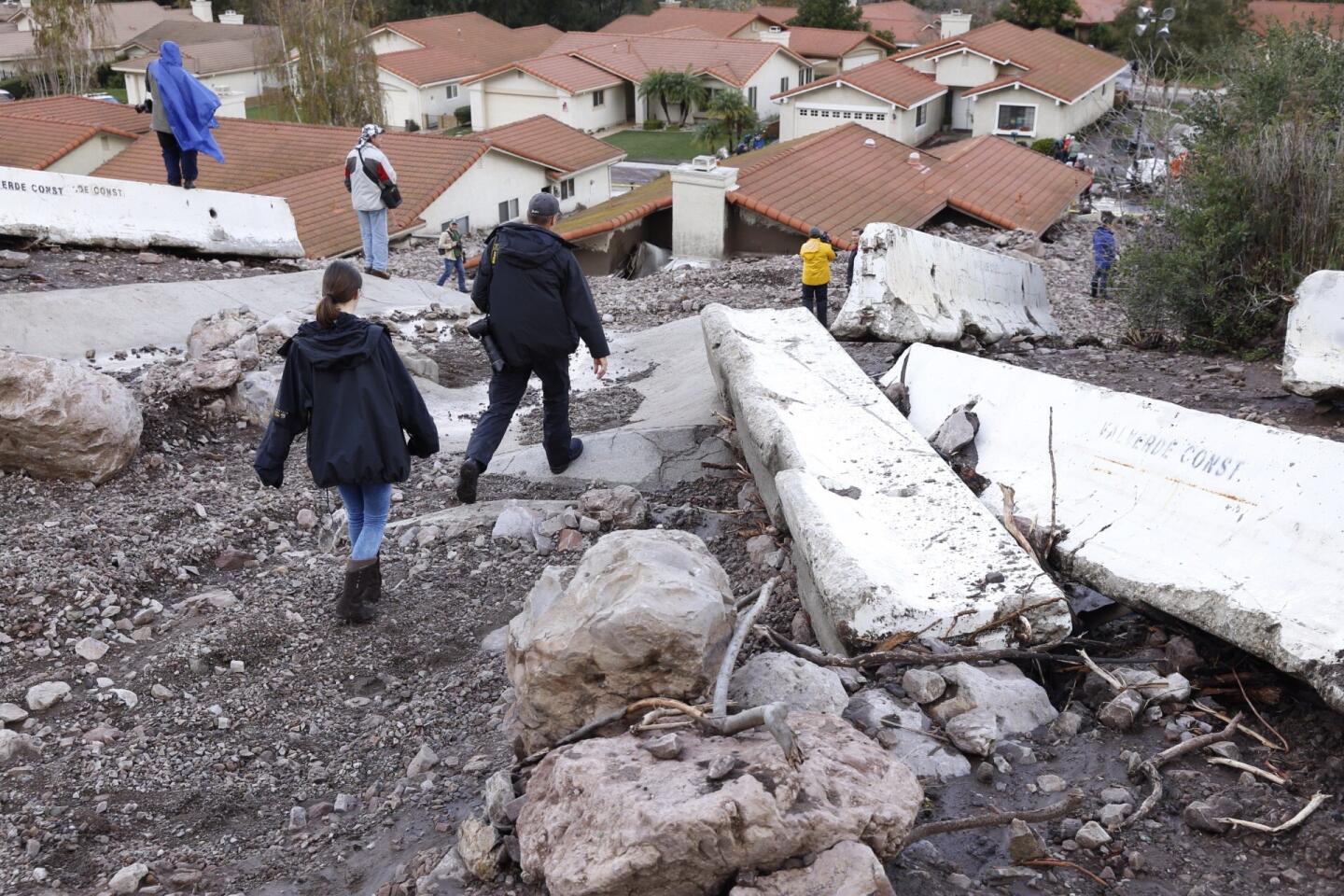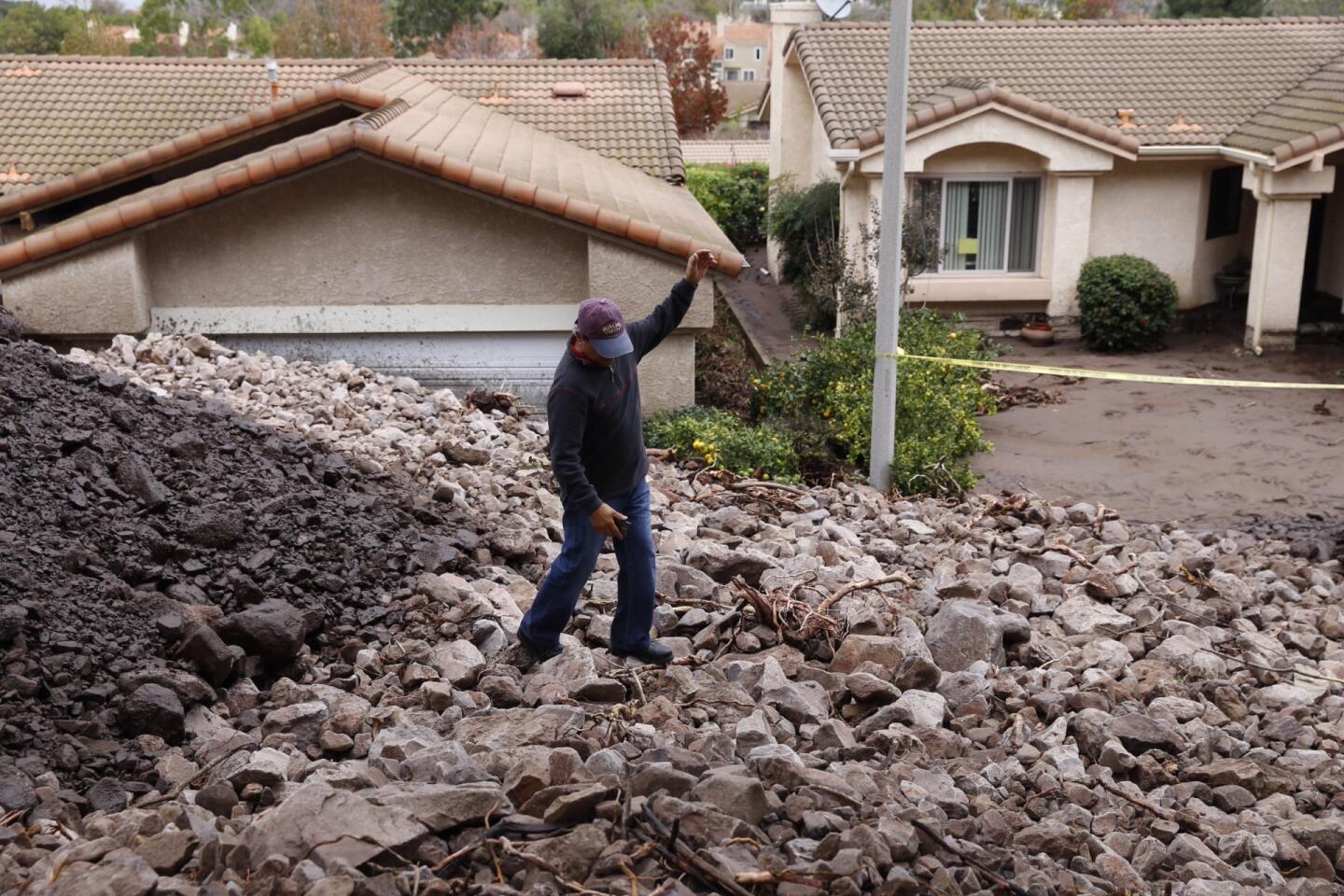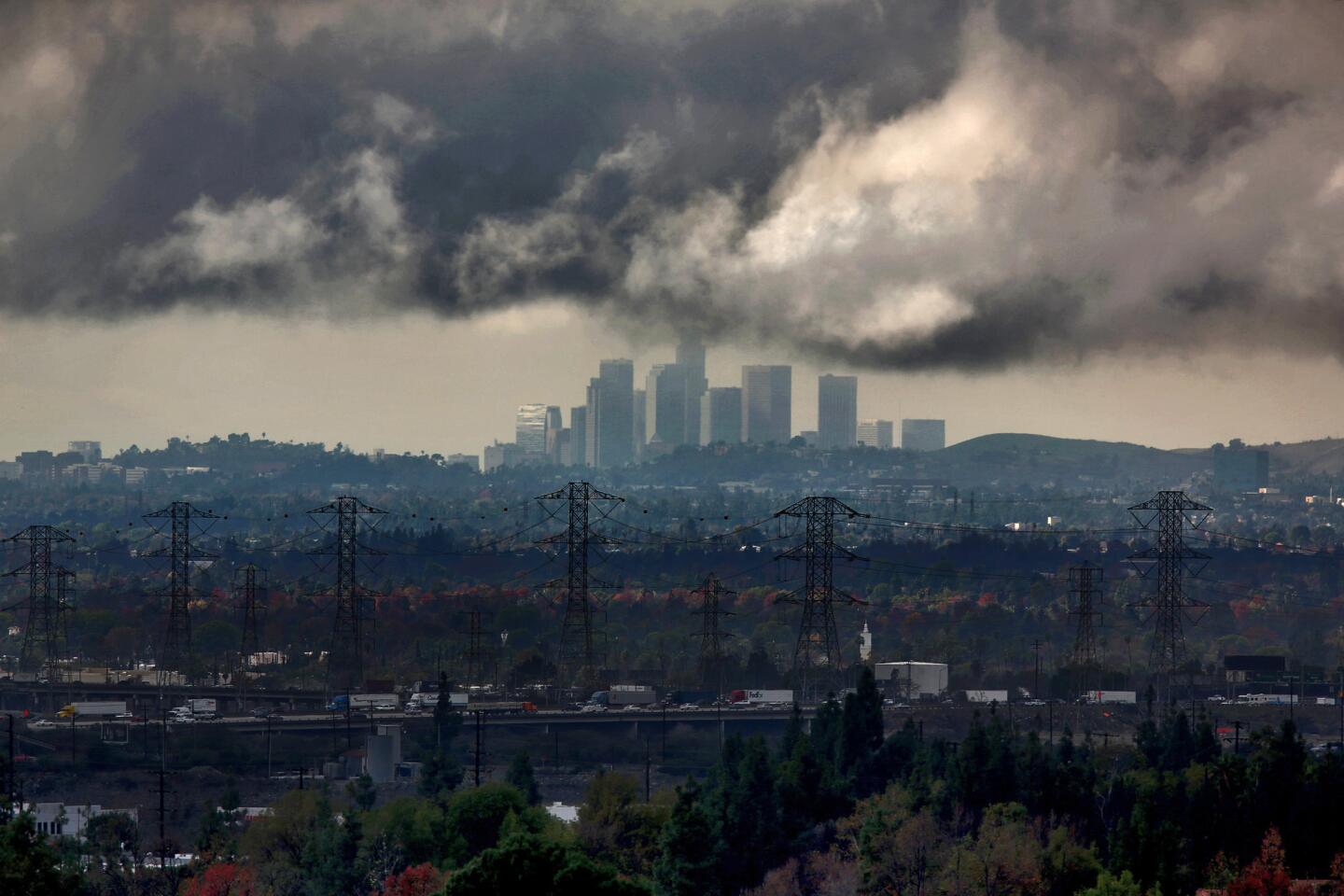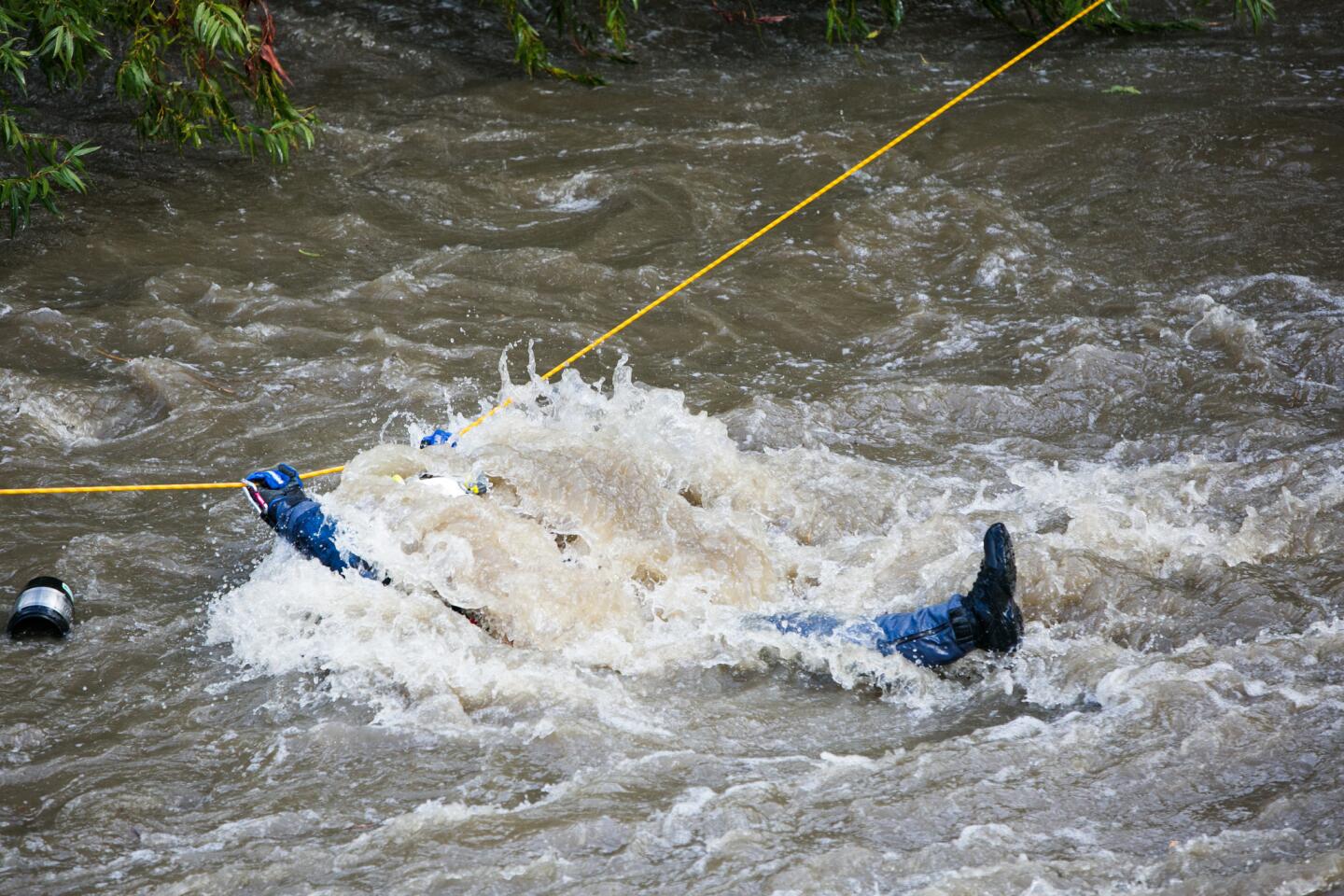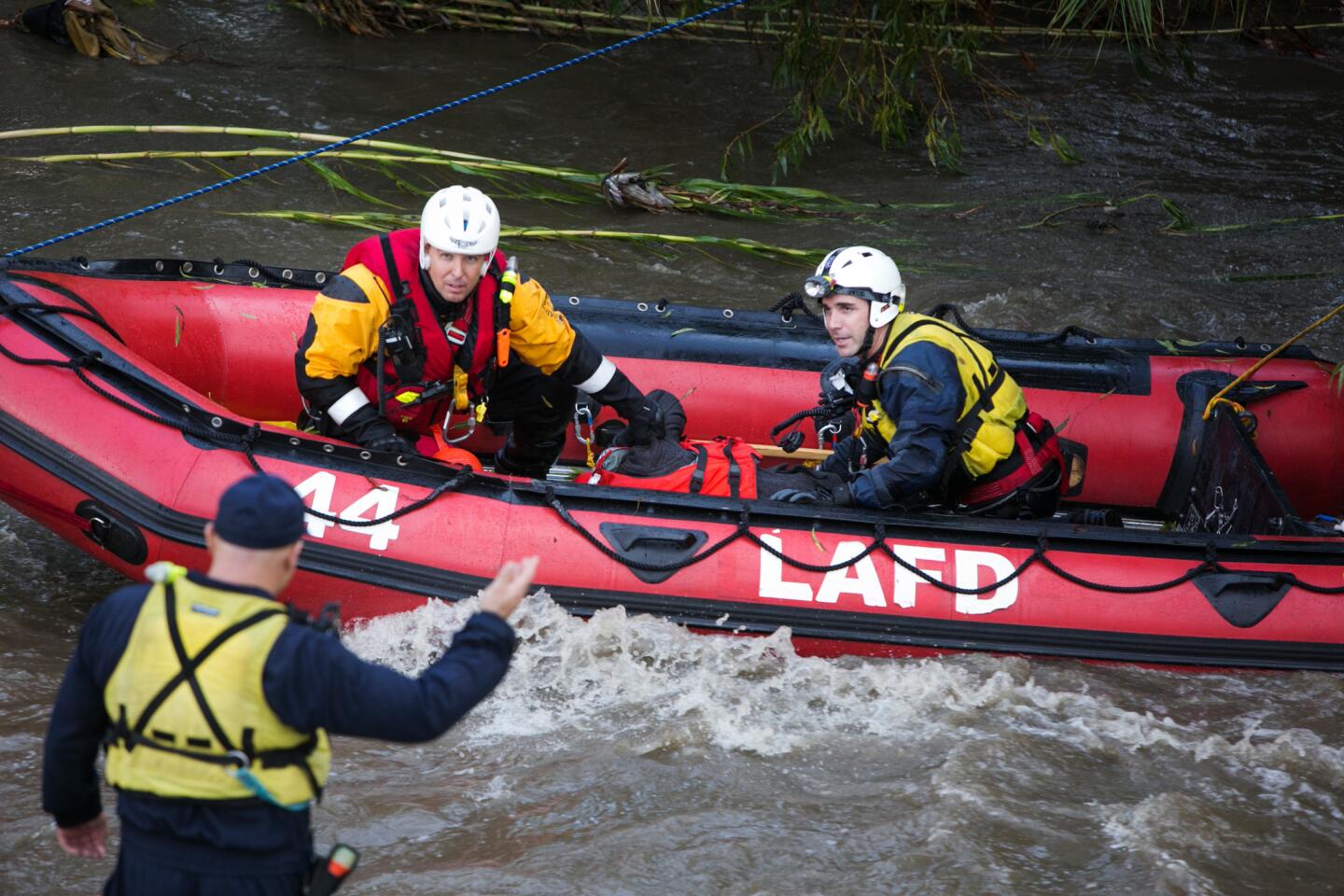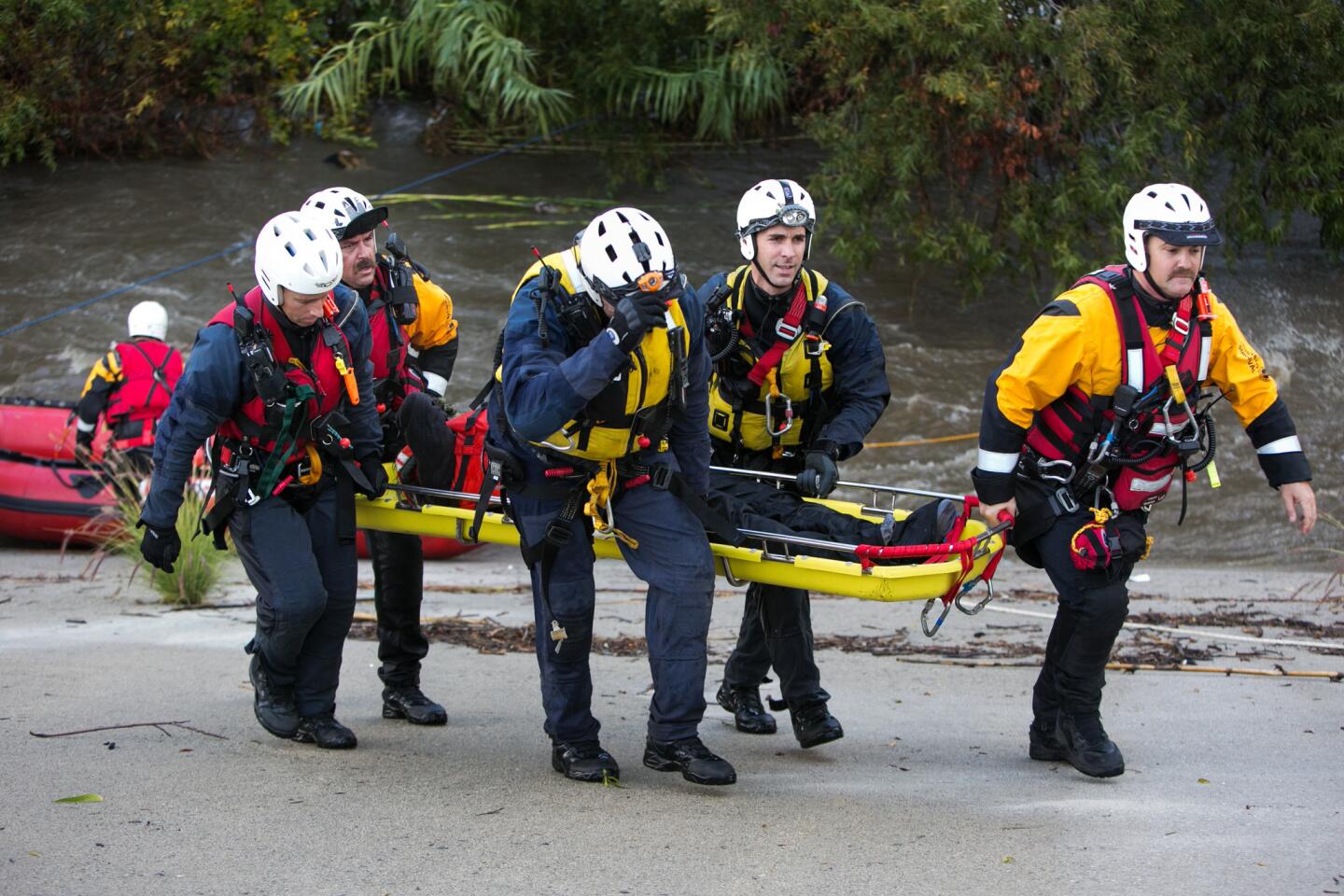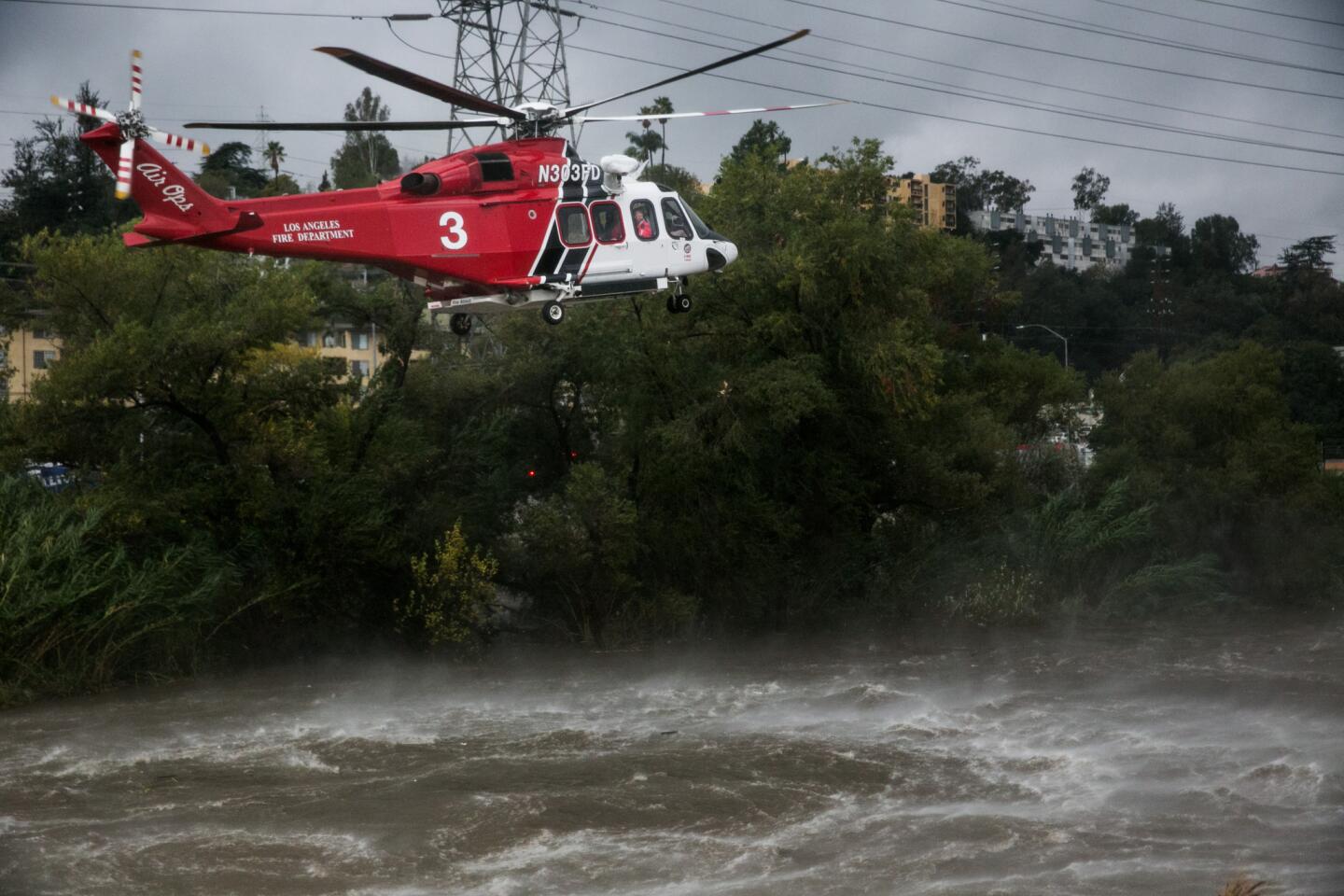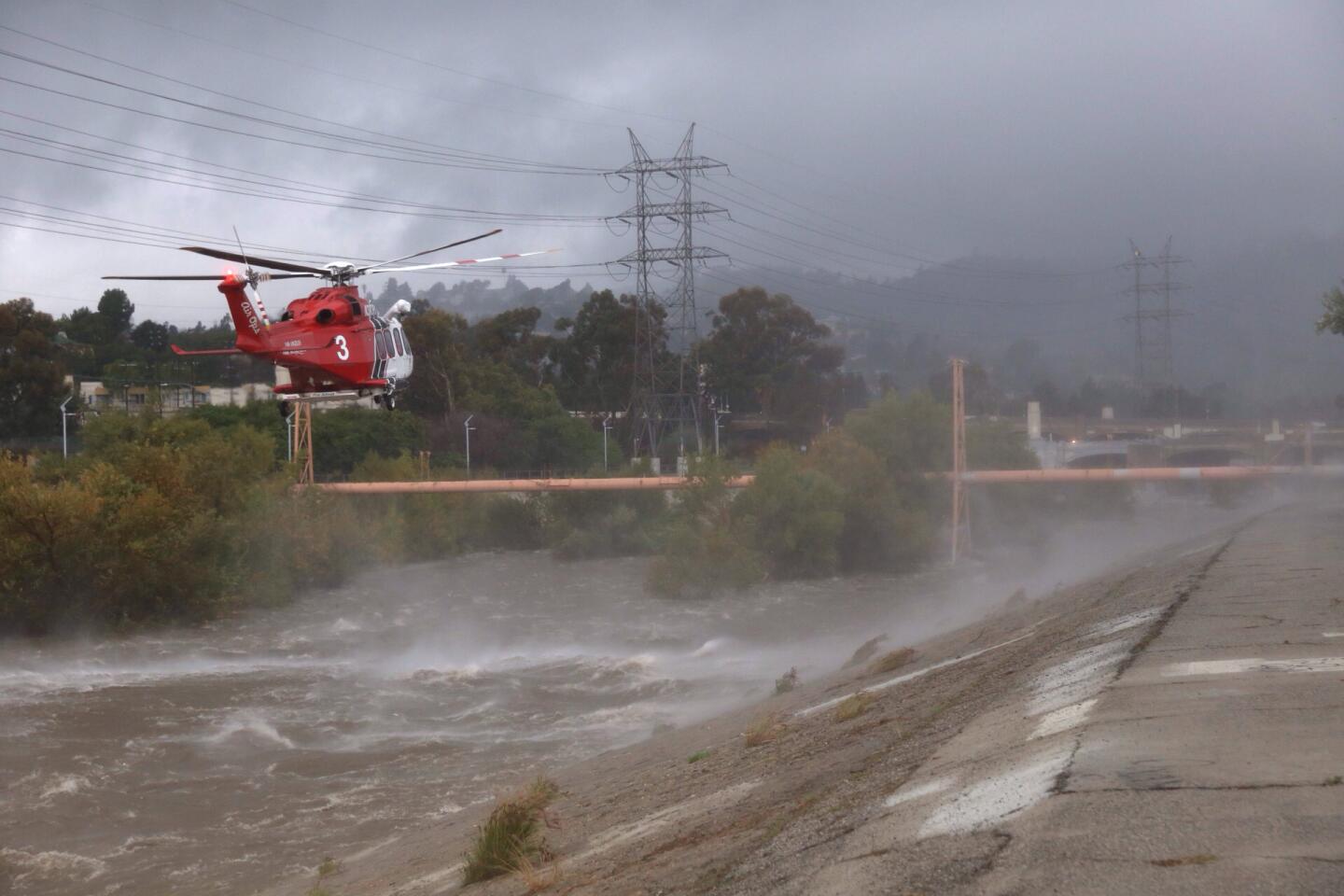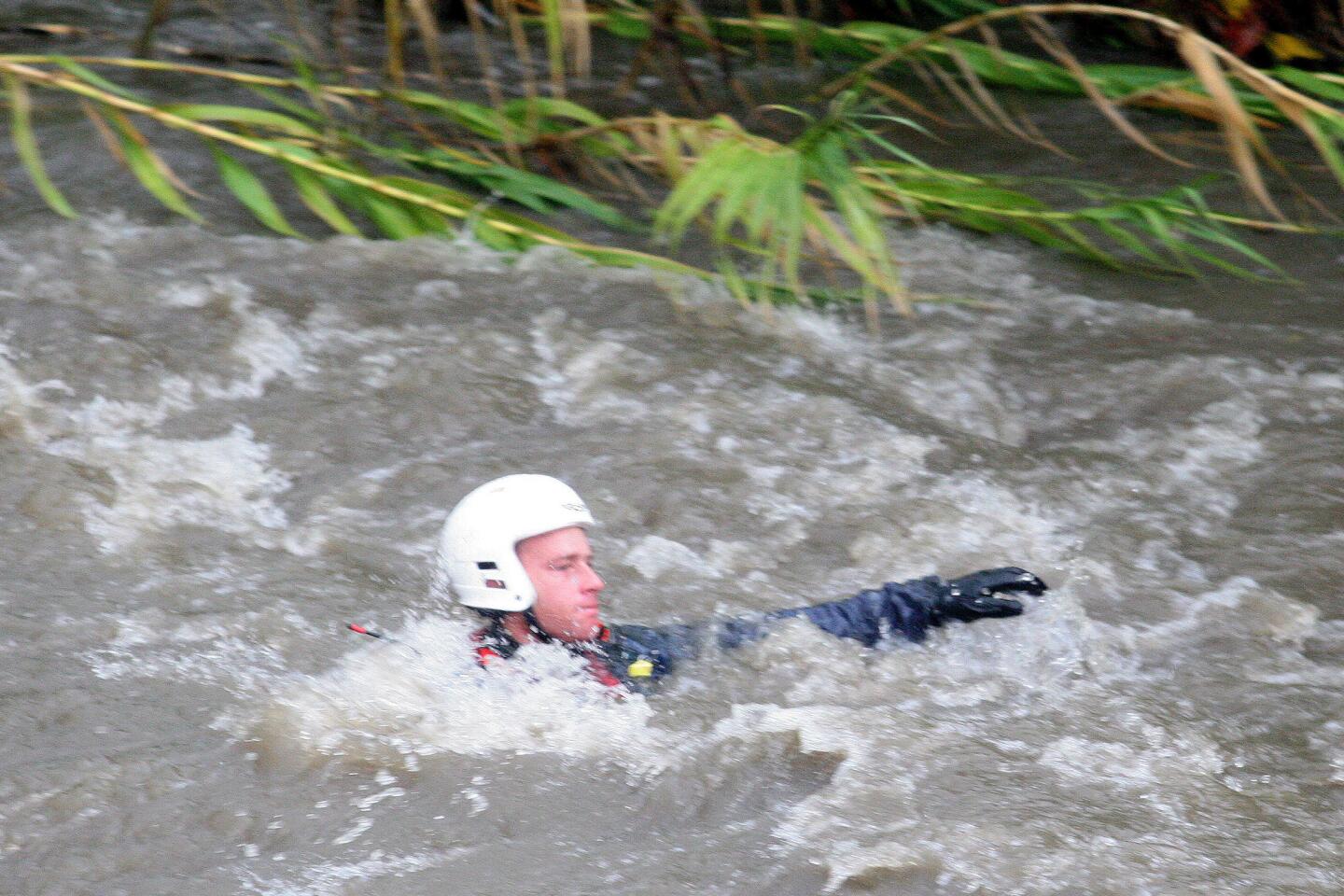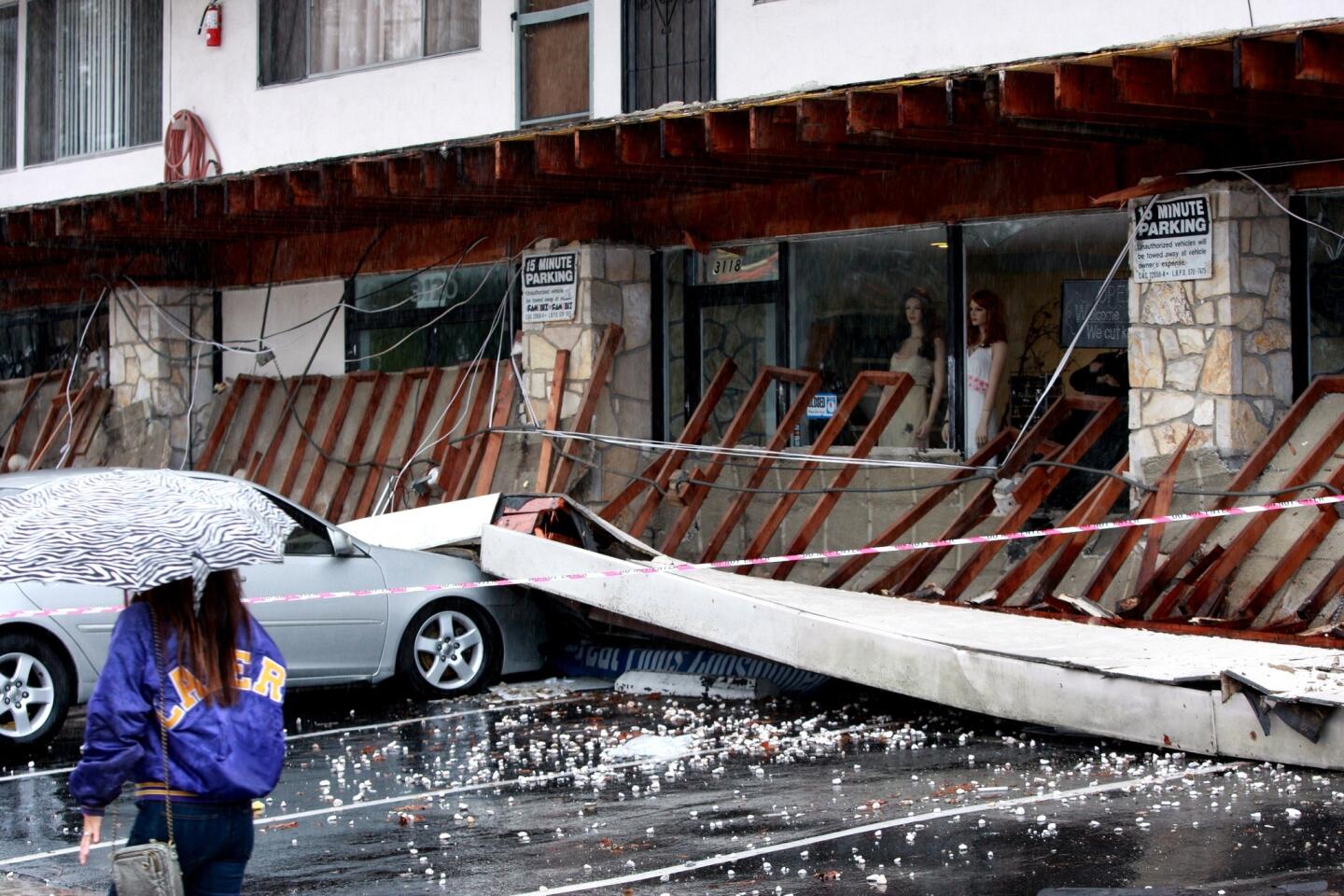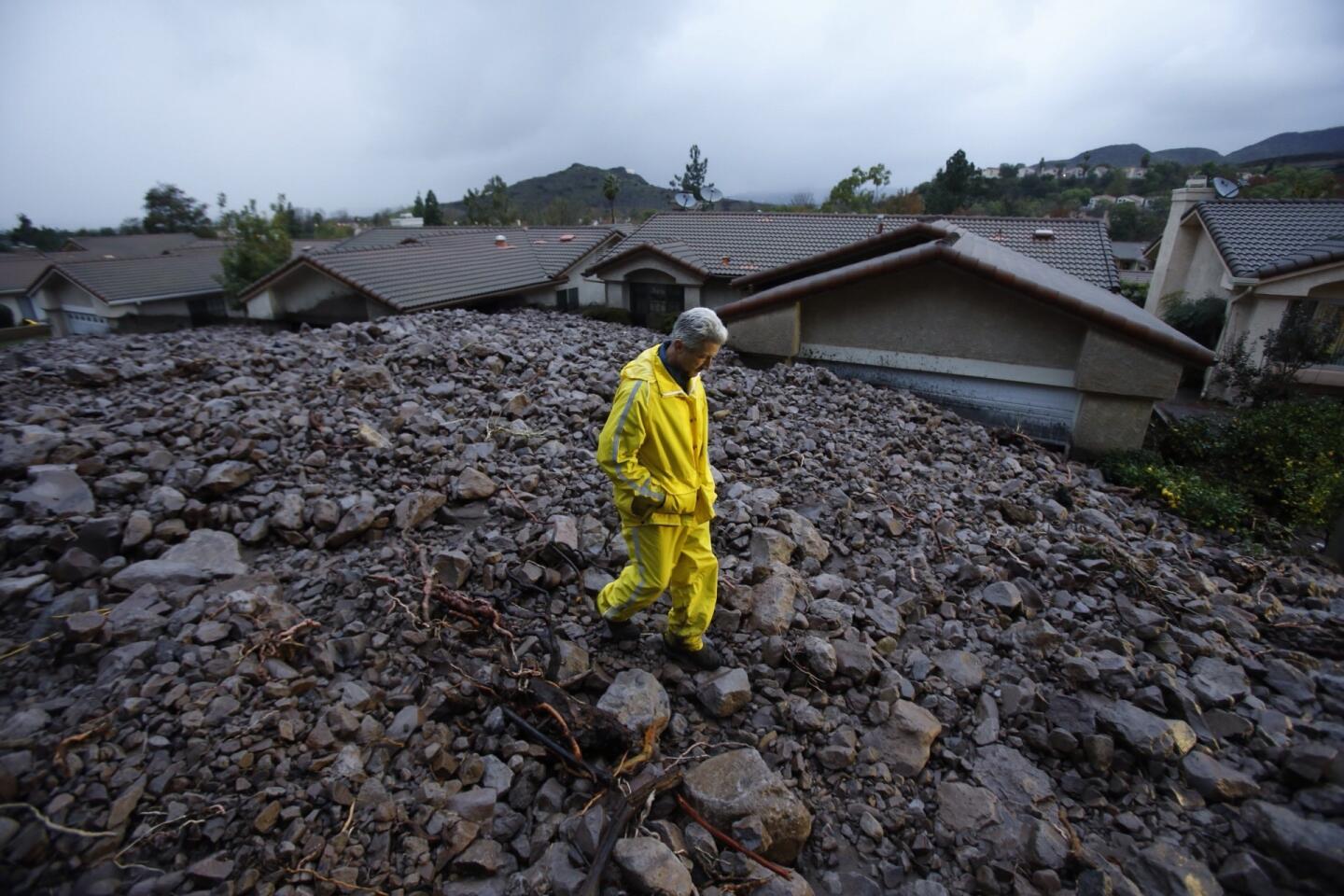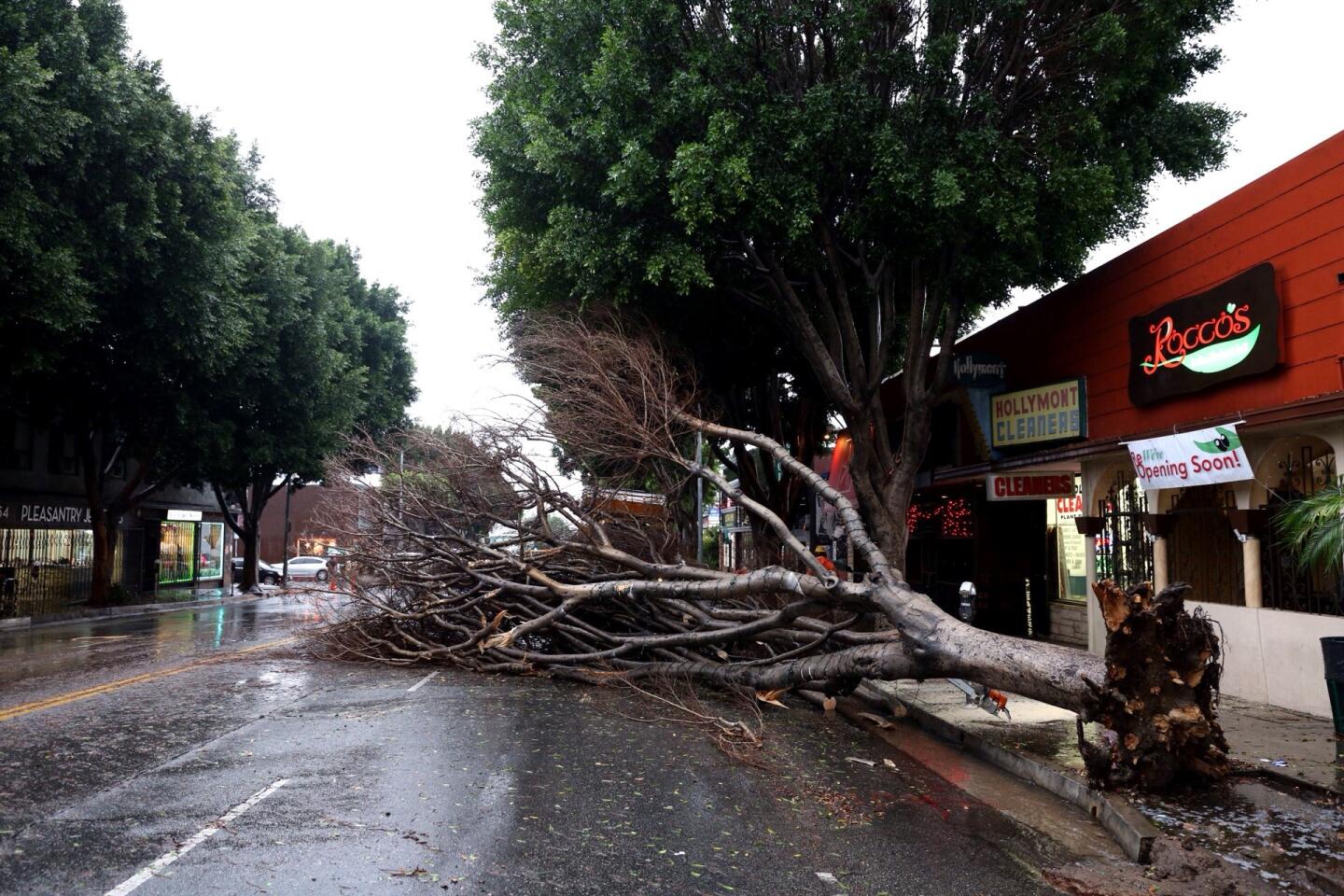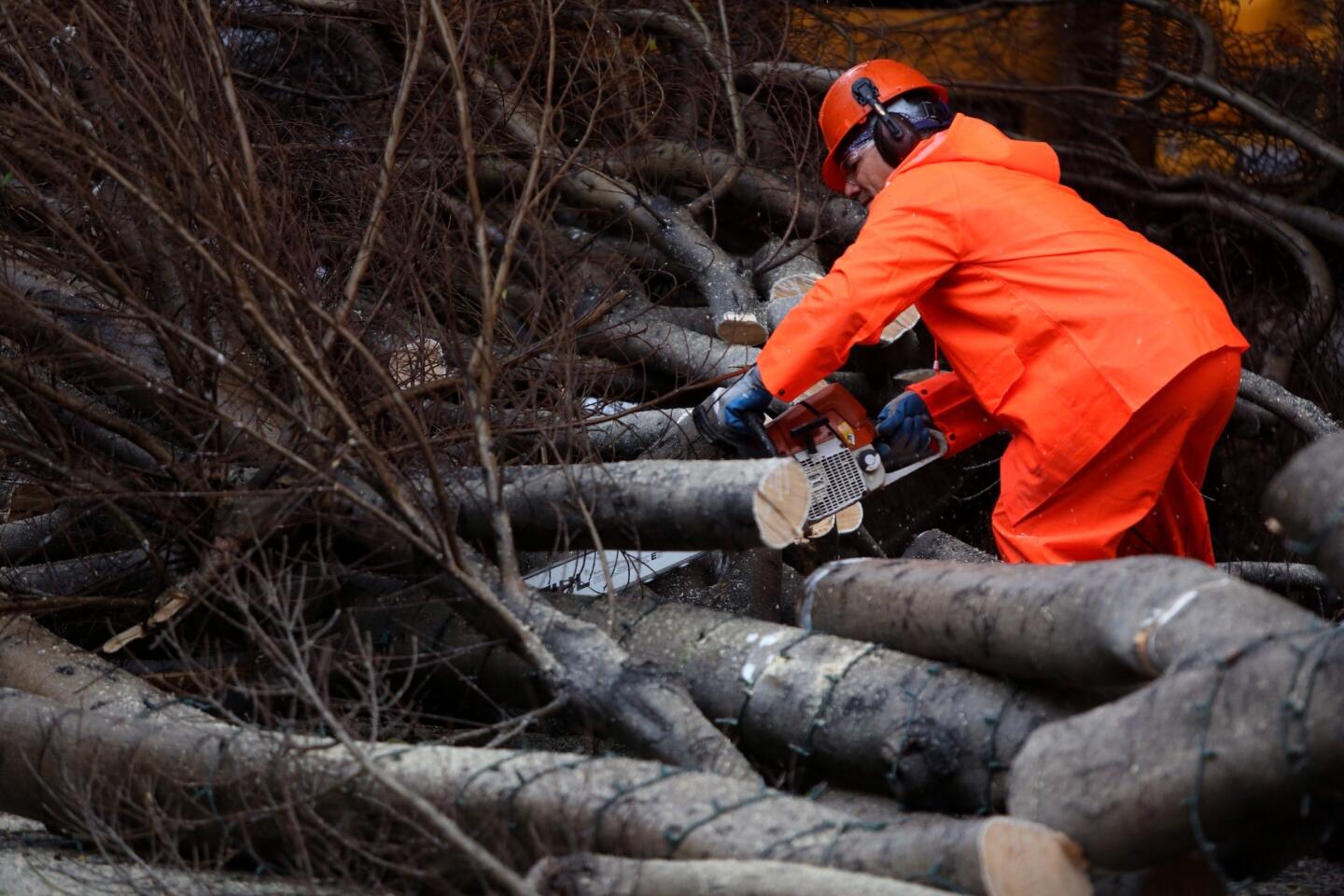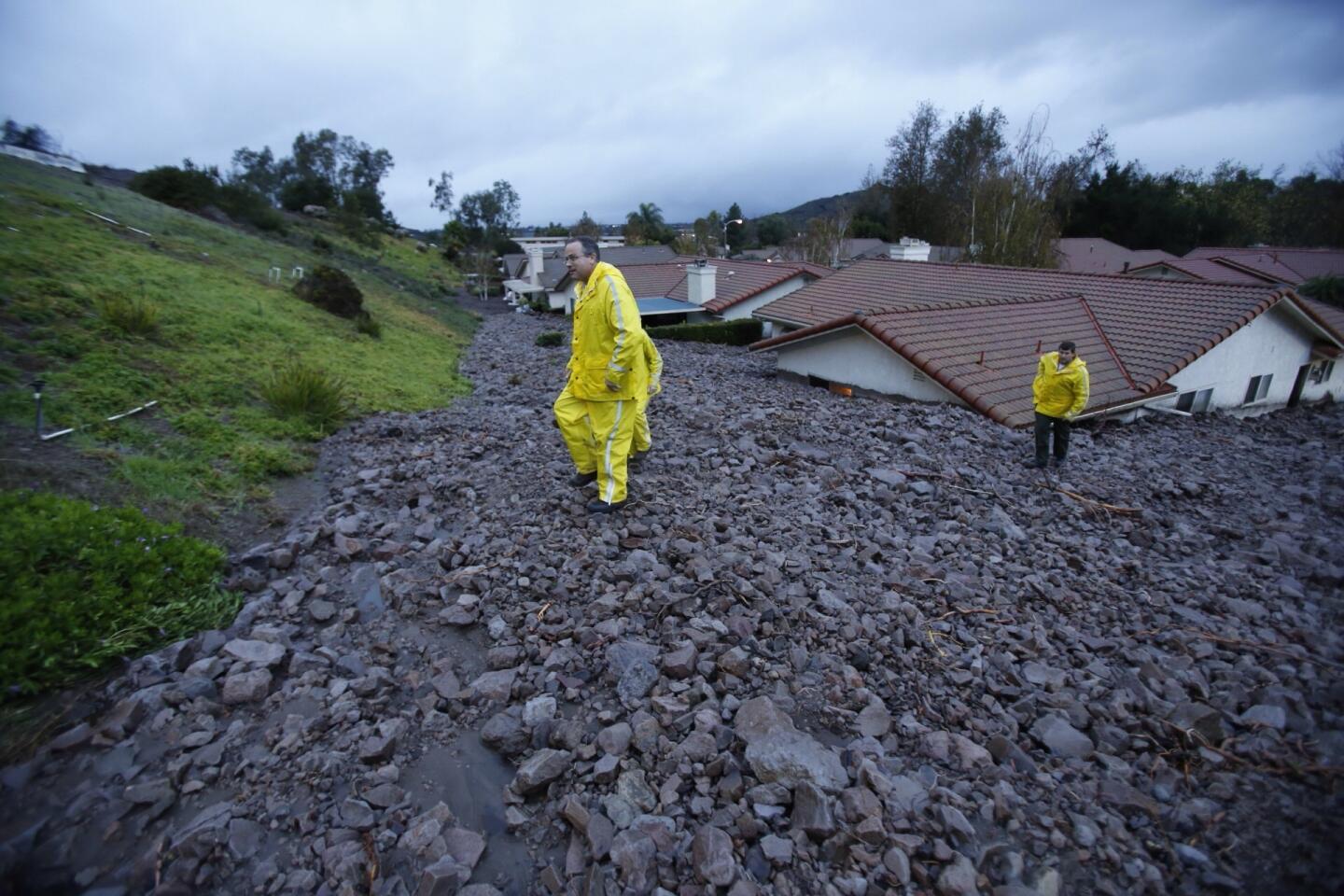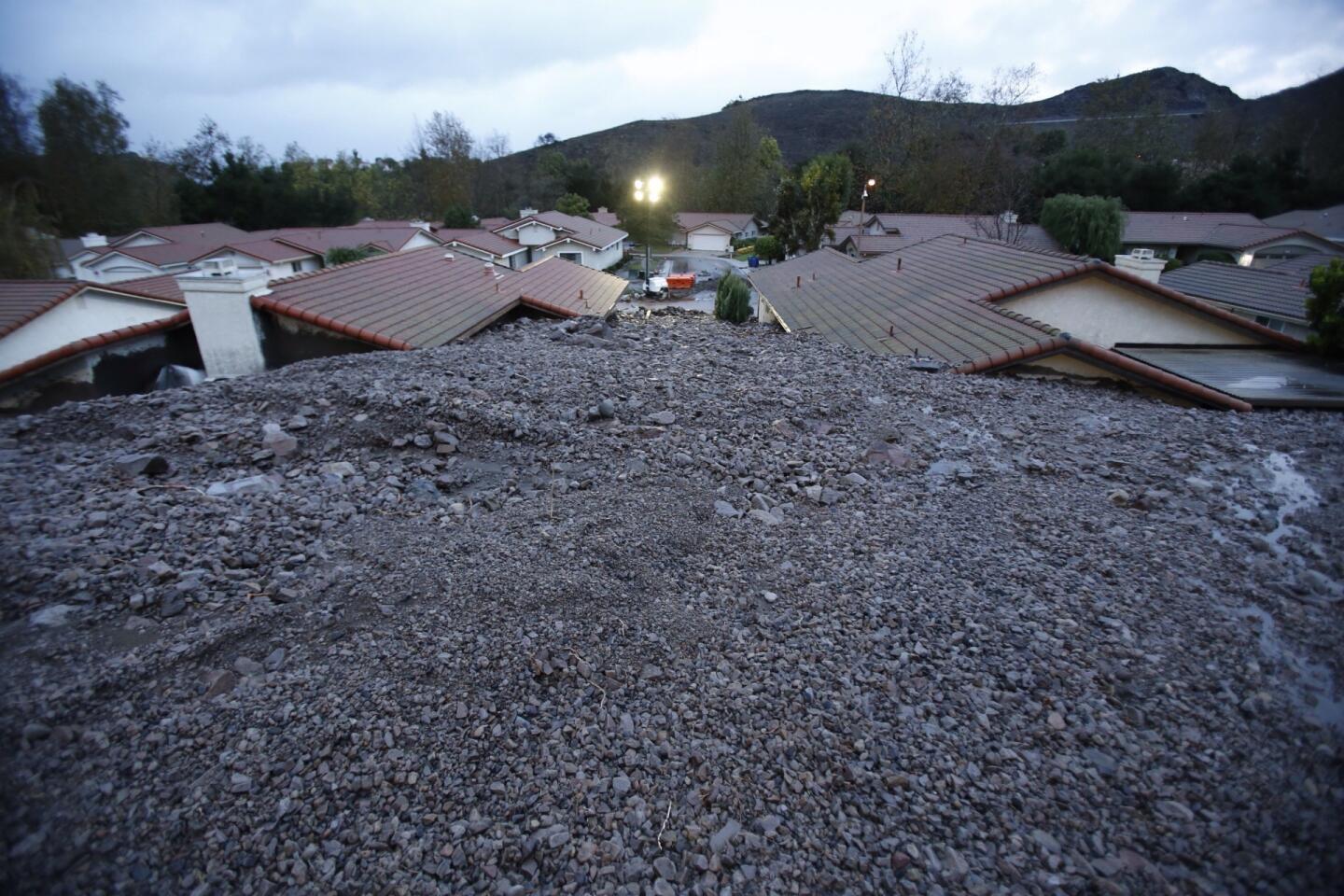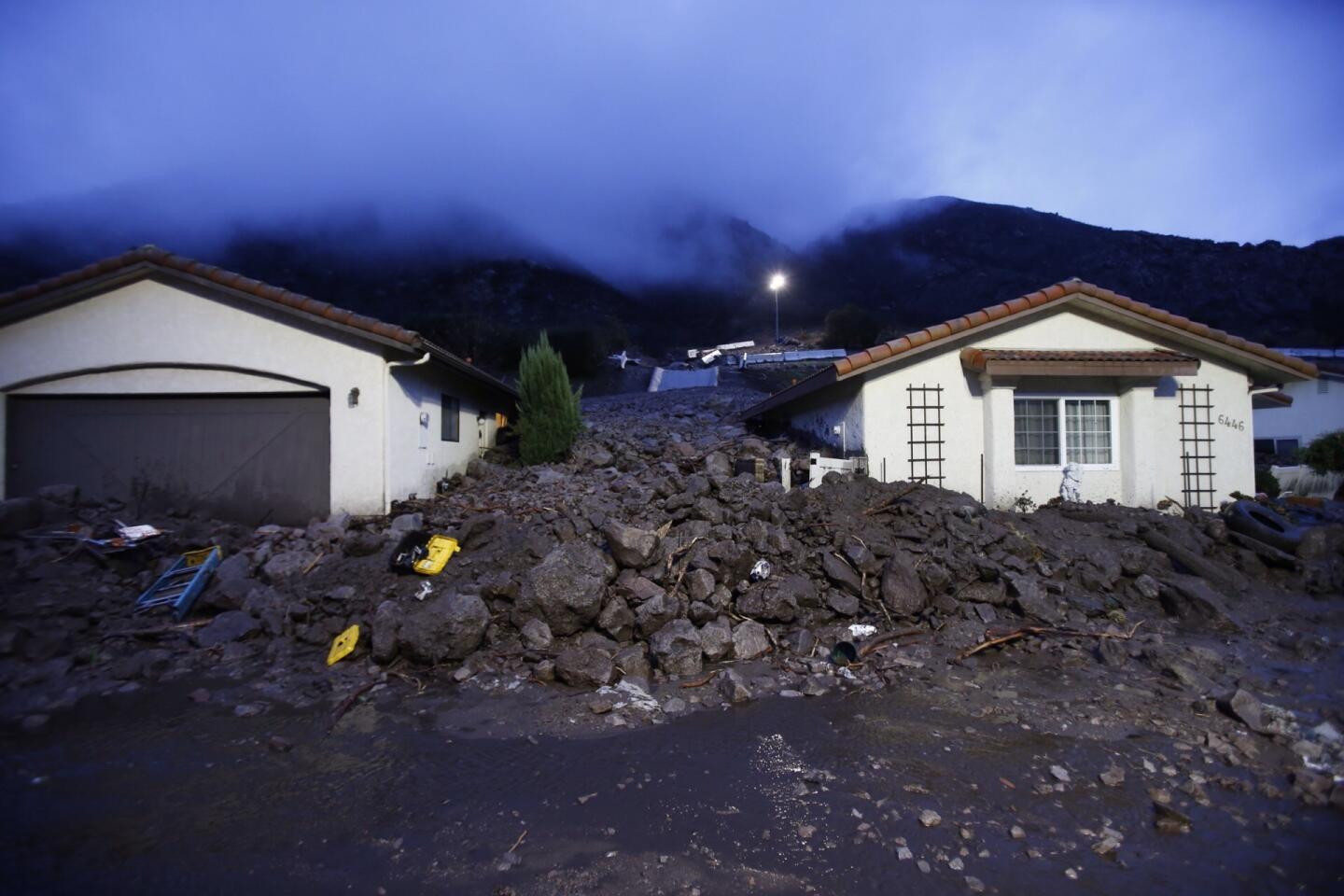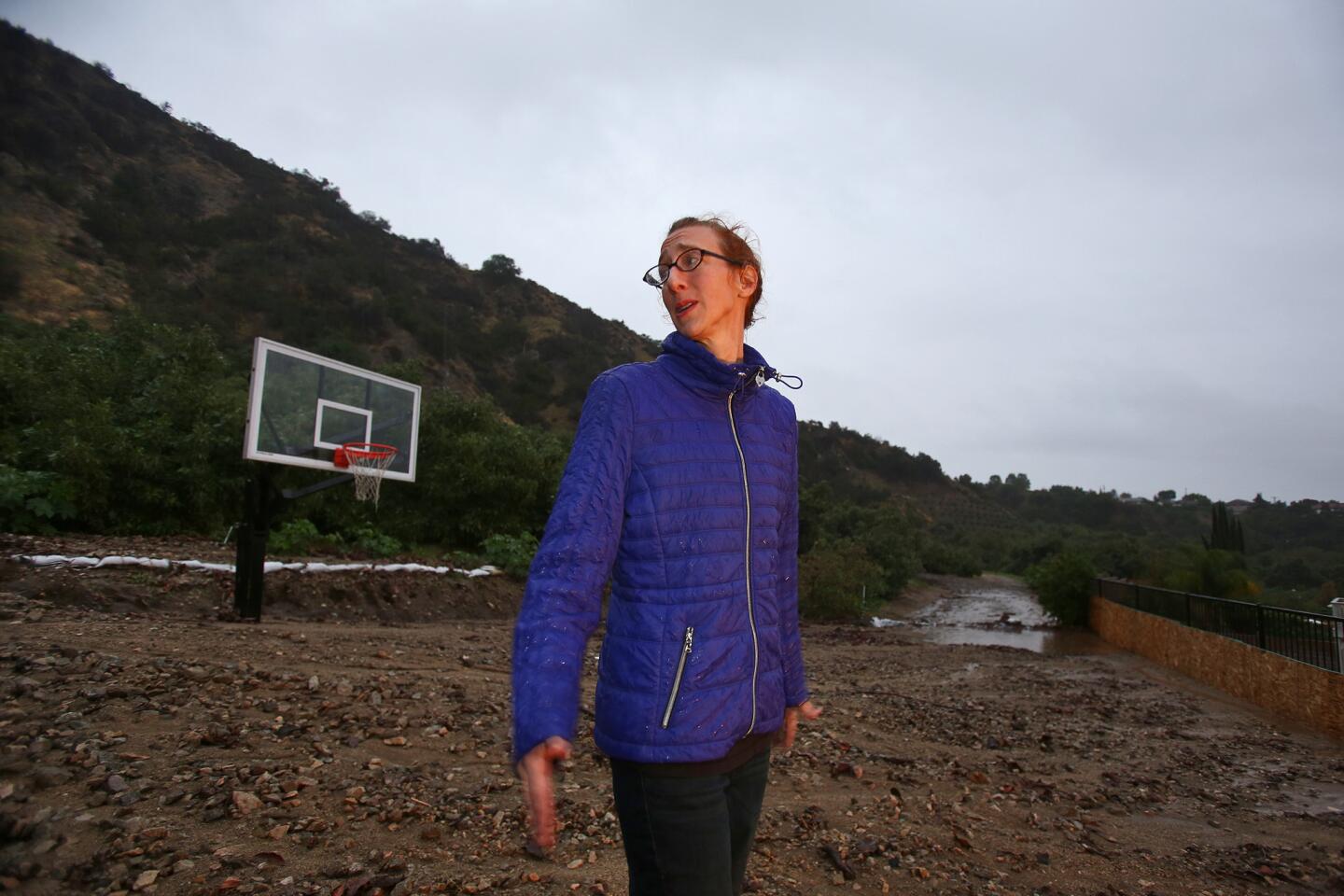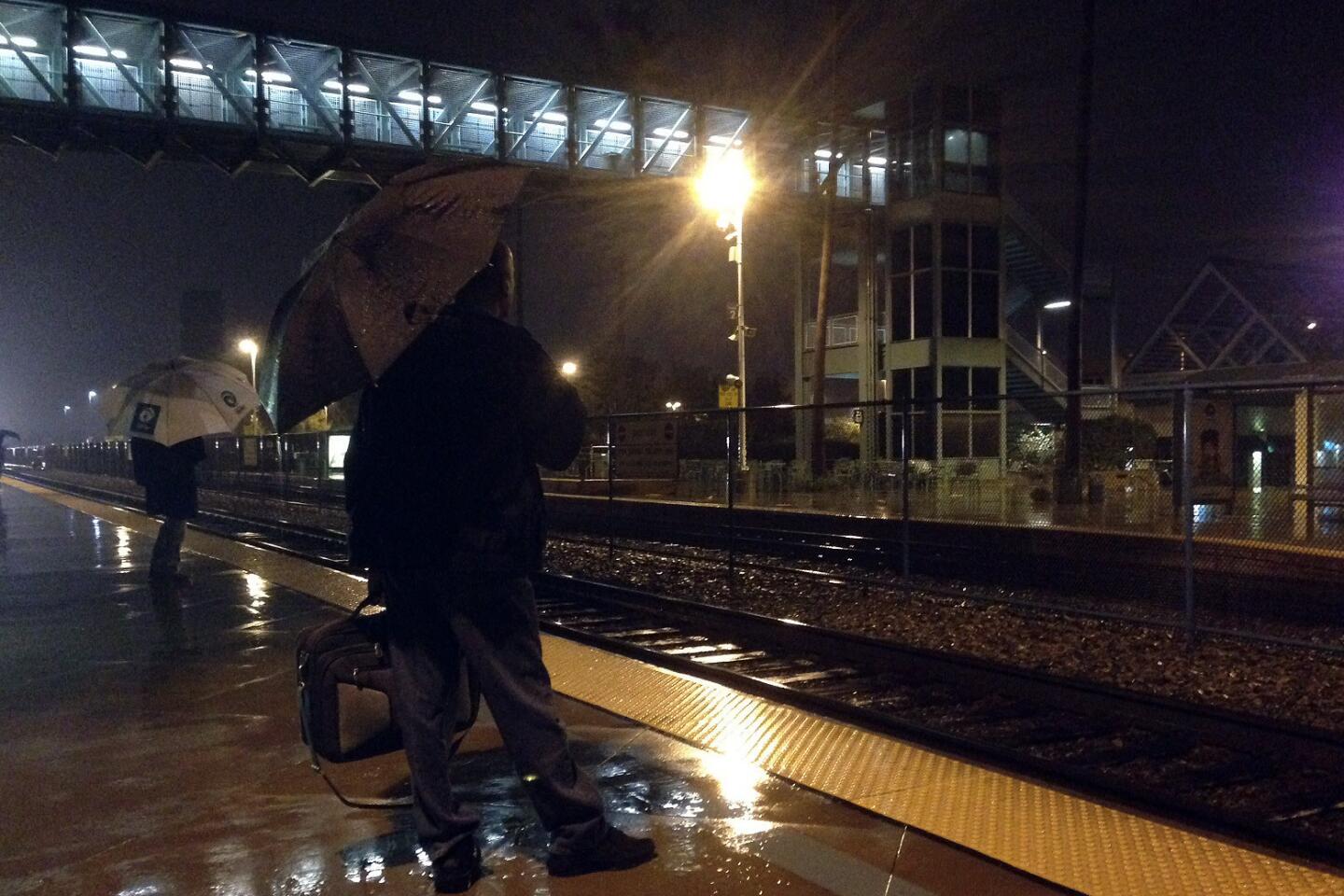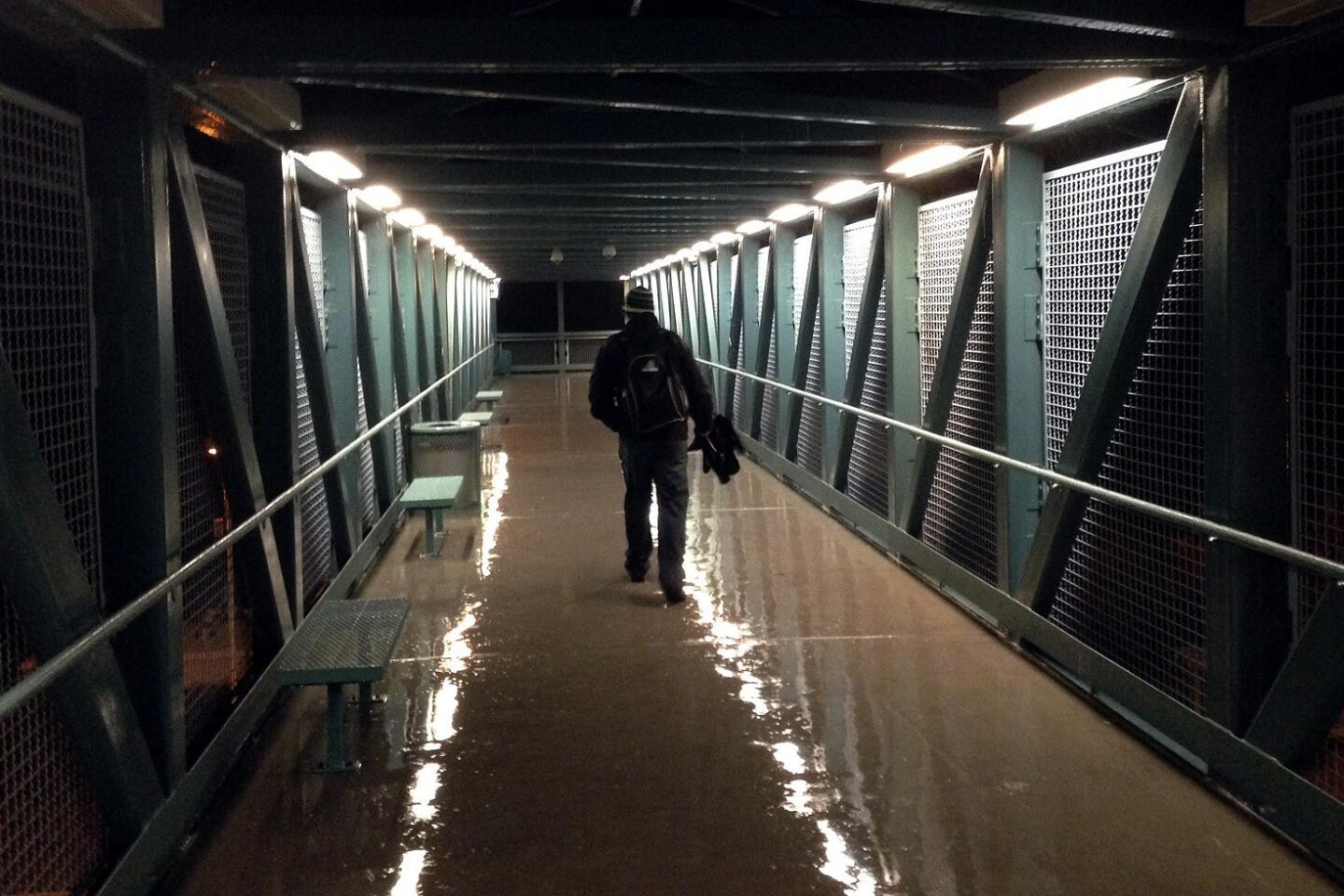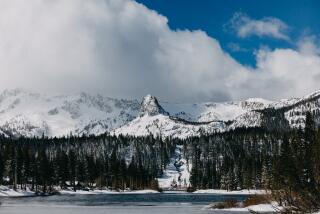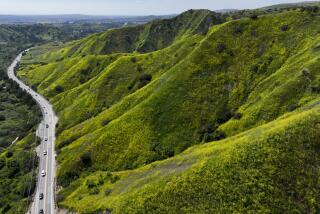State’s estimated rainfall in last 10 days: 10 trillion gallons
- Share via
How much rainfall has hit California in the last 10 days?
It’s hard to calculate. But one weather expert, Ryan Maue, offers this estimate: 10 trillion gallons.
That’s enough to fill 15.1 million Olympic-size swimming pools or power Niagara Falls for 154 days.
Using data from the National Weather Service, Maue — a Florida-based meteorologist for WeatherBell Analytics — calculated that an average of 3.5 inches of water fell across the Golden State.
In places such as the Sierra Nevada, where several inches of snow fell, Maue’s model liquefied the powder: 1 inch of water for every 10 inches of snow.
Since 1 inch of rain in a square mile works out to 17,378,742 gallons, and California has 163,696 square miles — voila, 10 trillion.
So how accurate is this estimate?
“It’s an accurate number, but it’s based on how good the precipitation data is,” Maue cautioned. “There’s no way to know exactly.”
Craig Shoemaker, a meteorologist with the National Weather Service’s Sacramento station, agreed that it’s a “kind of a neat number” but, alas, imperfect.
“We don’t take instantaneous observations at every point in the state,” Shoemaker said. “There’s going to be some level of inaccuracy.”
Maue’s data were based on totals from 4 a.m. Friday — meaning that daylong rains across Southern California on Friday could push the total higher.
And new storms are expected this week as well.
Is it true last week’s storms caused a tornado?
Yes, though the National Weather Service is calling it a “small tornado.”
The tornado hopscotched over a 10-block span of South Los Angeles on Friday morning, ripping off a roof and damaging at least five homes. There were also reports of water spouts off the coast.
Did the storms help California’s ravaged snowpack?
Yes.
The storms are expected to add several feet of snow in parts of the Sierra. The state’s snowpack is important because when it melts during the summer months, the water can replenish reservoirs.
Snowpack was essentially depleted by late spring of this year, according to state data.
The recent rains have helped boost the snowpack. As of Friday, it had climbed to 40%.
Water officials have maintained that significant storms such as last week’s drenching and this week’s downpour would need to continue throughout the winter to have a significant effect on the drought.
More to Read
Sign up for Essential California
The most important California stories and recommendations in your inbox every morning.
You may occasionally receive promotional content from the Los Angeles Times.


